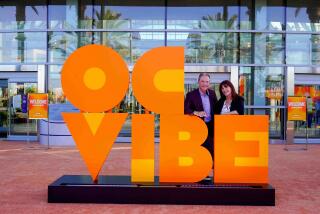Pro Teams: A Big Value for Small Cities
- Share via
As Sacramento commits $122 million in public funds to attract the Los Angeles Raiders, and Oakland promises at least $127 million in city and county-guaranteed bonds to lure them back, Los Angeles has yet to offer a single dollar of public money to keep the team.
Although Los Angeles authorities talk of private investments to remodel the Los Angeles Memorial Coliseum and plead the difficulties of obtaining public money here, it seems fairly obvious that the Raiders franchise is not as highly valued by those in power in Los Angeles as those in Oakland or Sacramento.
Just what is a professional team worth to a city these days? The answer, according to stadium finance experts, entrepreneurs, academics and municipal officials is that--depending on the community--its value can vary widely.
Often, municipal prestige and psychological considerations of local identity provided by a team seem more important than economics in gauging that value.
“The Raiders moving to Sacramento would be an event of the magnitude of the (1849) Gold Rush,” Gregg Lukenbill, the prime mover in the Sacramento bid, said last week.
But in Los Angeles, County Supervisor Pete Schabarum--who is also a Coliseum commissioner--suggested recently that it would be no loss to the city at all if the Raiders were to leave.
Not everyone agrees with Schabarum. And the Raiders--with all the controversy engendered by their principal owner, Al Davis--are something of a special case. Davis and the Raiders have probably done a more effective job this year of enticing huge bids for their presence than any other franchise in the history of sports.
Their choice of which lucrative offer to accept may be announced as early as this week, according to some team sources, although both Oakland and Sacramento officials last week discounted the possibility that a decision would be made that quickly.
It is plain that smaller cities on the make, perceiving they have much to gain in prestige if they win a pro franchise, often have proved willing in recent years to put up a lot more money than their larger counterparts to get a team. They make the kind of offers many team owners won’t refuse.
As a result, quite a few teams, particularly in football, have chosen to move. New York has lost both its pro teams to the New Jersey Meadowlands complex. St. Louis lost its team to Phoenix, and, earlier, Baltimore lost its team to Indianapolis. A decade ago, Los Angeles lost the Rams to Anaheim.
The trend seems to be building, and not only in football. In California, San Jose is engaged in a major effort to grab the San Francisco Giants baseball team, with even more zeal since San Francisco voters narrowly voted down a new stadium for the Giants last month. Santa Ana and Anaheim are laying plans to build indoor arenas in hopes of getting basketball or ice hockey franchises. The Los Angeles Clippers basketball team remains a likely target. Irwindale keeps trying, against heavy odds, to put together stadium financing to get the Raiders.
What are football franchises worth? Joseph Alioto, the former mayor of San Francisco and Davis’ lead attorney in his successful battle to move the Raiders to Los Angeles in the early 1980s, says that a pro football team can be sold for close to $100 million. A pro baseball team, he says, might go for $50 million to $60 million.
The franchise fee alone for Oakland or Sacramento to obtain the Raiders, without any change of private ownership of the team, exceeds $50 million. By contrast, Los Angeles obtained the Raiders in 1982 for what amounted to a franchise fee of only $6.7 million.
But that is only part of the story. The construction or modernization of stadiums, the cost of debt service on bonds, guarantees of ticket sales sometimes years in advance--all of these can add mightily to the cost municipalities must bear in luring a team.
Oakland and its partner, Alameda County, for example, may be willing to guarantee $108 million in bonds in their offer to the Raiders, but the total size of the proposed deal, including debt service and advance obligations, has been calculated by local observers at $239 million. Lukenbill last week said the total value of the Sacramento offer to the Raiders--in both public and private money--could reach $400 million.
The most that has been mentioned in a projected private Los Angeles deal to keep the team by remodeling the Coliseum is $155 million, not including the debt service.
Dean Baim, a Pepperdine economics professor who wrote a thesis on costs and financial returns of a number of stadiums across the country, estimated that only three of 14 stadiums he examined are paying for themselves or will do so in the near future without a subsidy. These were Dodger Stadium, Anaheim Stadium and Denver’s Mile High Stadium.
Baim found that Cincinnati’s Riverfront Stadium, Robert F. Kennedy Stadium in Washington, San Diego’s Jack Murphy Stadium, the Oakland-Alameda County Coliseum, Baltimore’s Memorial Stadium and Atlanta-Fulton County Stadium “in all likelihood will never recover their cost of construction.” And, he said, the Louisiana Superdome and Buffalo Memorial “were so ill-advised that they do not only fail to cover their fixed costs, but are running operating losses as well.”
The costs of some stadiums to municipalities had soared beyond all expectations, Baim found. The renovation of Yankee Stadium, originally estimated at $21 million, eventually cost New York $98.5 million. Altogether, of the 14 stadiums he examined, Baim concluded the overall government subsidy of the professional teams has totaled $136.6 million.
The Los Angeles Memorial Coliseum, built in 1923, has not required a subsidy, and in most years turned a profit. The Raiders have been paying about $1 million a year for its use since the $6.7 million in gifts and credits the team received for coming here was exhausted. Baim did not include the Coliseum in his study.
But the subsidy record for the stadiums he did study throws into doubt the often rosy economic projections consultants come up with for municipal clients to gauge the economic benefit of bringing in a team.
For example, Economic Research Associates of Chicago did a study for the city of Sacramento on the “Economic Impacts of a National Football League Franchise in Sacramento.” It projected a total direct and indirect economic benefit to Sacramento of $67.6 million in the first year and $1.63 billion over 20 years, all in 1989 dollars.
Steve Gerritson, a partner in Economic Research Associates and author of the report, said that although “the Raiders have not been the greatest team lately, what I did was take the league average game attendance of 65,000 and bump it up a bit to 70,000. I don’t think that’s outlandish.”
But, in Phoenix, where the football Cardinals arrived with great hoopla from St. Louis last year, attendance has dived with high ticket prices and poor performance, and projecting near-capacity attendance as an important base of economic impact without knowing how a team is likely to do may not be reliable. (Raider attendance in Los Angeles this year also has been way down. Only 38,747 showed up last Sunday, for example, but the attendance decline may, in part, be a result of the talk that the team may move.)
“I certainly don’t make any claims that the (Sacramento) stadium would pay for itself,” Gerritson says. “It would cost the taxpayers a considerable amount of money.”
A common criticism of economic impact studies is their projection of big benefits for a community based on such factors as ticket sales, while not taking sufficient account of the fact that if one attraction isn’t available, spectators will simply divert their interest, and dollars, to another. Visitors may come to town anyway, seeing a basketball game or going to an amusement park or a play if football is not there.
But such an easy transfer of dollars is less likely in a small community, with only a few attractions, than a larger one with a great many.
No economic impact study for the Raiders in Los Angeles has been done, so there is no estimate of the economic advantage the team might have brought the city, nor any estimate of what the city would lose if the team moved.
“The value of a major professional sports franchise to a young and growing community that is trying to put itself on the map is inestimable,” said Kenneth Adams, a Washington attorney who worked for months trying to put together the Irwindale stadium deal, and is now assisting San Jose’s efforts to develop a stadium.
Adams adds: “The inescapable conclusion of the last 10 years is that a professional sports franchise has more value to an Irwindale or a Sacramento than to a Los Angeles or a San Francisco. And accordingly it’s very difficult to persuade the citizens in the big cities to spend taxpayer money on retaining a team.”
However, Alameda County Supervisor Don Perata, a leader in the effort to entice the Raiders back to Oakland, says he believes that, big city or small, a team can be important for municipal morale.
“It really provides a galvanizing effect for the community,” Perata said. “It fuses an identity. It provides the community a separate and distinct interest which people share in common, and for us, in Oakland, that is very important because we have such a diverse community, socially, economically and ethnically. It provides a common reference for us, and we know that’s very valuable.”
So, Perata has made getting the Raiders back his priority, and, in Sacramento, Lukenbill has the same priority. “The announcement of a Raider move here would be magical,” Lukenbill said last week.
Locally, there also are those who feel that the Raiders, the Dodgers, the Lakers and even the big college teams--the USC Trojans and the UCLA Bruins--are of tremendous value to the Los Angeles metropolitan area.
“I think there’s an extreme value, even to Los Angeles, in these teams,” says state Sen. Bill Campbell (R-Hacienda Heights), a former member of the Coliseum Commission. “You have the community pride, the cohesiveness that a sports franchise brings.
“In the office, everyone is talking about the game the day before or the night before. It brings an esprit de corps to a community that otherwise is not there.”
Labor leader Bill Robertson, who as a Coliseum commissioner was the most instrumental in negotiating the deal that brought the Raiders to Los Angeles, said that he agrees and also believes the economic value of a team can be important.
“I obviously felt, when the Rams left, that it was essential that we secure a team to replace them,” said Robertson, a former commissioner, “for economic reasons for the community, and also for the Coliseum Commission’s solvency.
“The same conditions apply today. Not only the primary economic effect, and the ripple effect in Los Angeles at large, but also because the Coliseum is located in a depressed area and it’s very important for the morale of the people living in that community to keep it busy.”
Still, Robertson said he is certainly aware that the many big city electorates have proved unwilling to invest public money in such teams. Funds to build big municipal stadiums have recently been voted down not only in San Francisco, but in San Antonio and Phoenix. Campbell and Robertson have left the Coliseum Commission, and their successors do not seem quite as devoted to keeping the Raiders.
“Cities are different,” Robertson said. “Indianapolis built a stadium just in hopes of getting a team. They spent millions in taxpayers’ money. In Los Angeles, it seems politically out of the question.”
More to Read
Go beyond the scoreboard
Get the latest on L.A.'s teams in the daily Sports Report newsletter.
You may occasionally receive promotional content from the Los Angeles Times.










